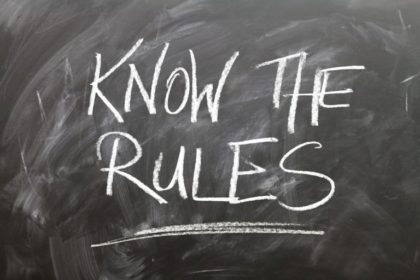
There’s this motivational quote that does rounds online: “The quality of your questions determines the quality of your life.” We can’t vouch for this statement, but we can assure you that the quality of your questions can affect the quality of your book cover.
You see, book cover design can be an effective marketing tool. But high-quality cover is a combination of masterful artistry and thorough planning. We’ve prepared a small checklist of questions that will help you come up with the best book cover design ideas and communicate them to your book cover designer.
Let’s start.
- Who is my target audience?
You should design a book cover with a detailed portrait of your target audience in mind. And, the more specific this portrait is, the better. For example, if you write an urban fantasy book, the answer “urban fantasy fans are my TA” is not sufficient.
You should clearly define your readers. For instance: My target audience is urban fantasy readers aged 20-35, who enjoy the works of Seanan McGuire and have a taste for Tarantino’s movies.
“But what if I’ve written this book for myself?” You ask. “I didn’t have any target audience in mind.” It doesn’t matter. You may have written the book for yourself alone, but still, there are people who have similar tastes and seek the experience your writing provides.
- What is the emotional need of the TA that my book can satisfy?
We read books not only for captivating stories but also for emotions they grant.
- We pick horror books because we want to feel scared.
- We dive into thrillers in search of tense suspense and a sense of mystery.
- We prefer romances because we want to be enamored with the characters and feel the rush of blood to our cheeks.
- We escape into fantasy worlds for that adrenaline-fueled sense of adventure and discovery.
You need to figure out what is the core emotional craving of the readers that your book can satisfy. And this is exactly that emotion your book cover should evoke from the first sight.
- How can I describe the story of my book in one short sentence?
The answer to this question is a great source of inspiration for the book cover concept. If you can answer it you can also figure out how to laconically depict your story within the limits of the book cover.
- What covers already reflect what I want my cover to?
There are books that target a similar audience and whose covers are great examples of attention-grabbing pieces of art. Find them, analyze them, determine what makes them stand out.
A fine selection of references is super useful when it comes to finding inspiration for an effective book cover. Also, universal advice: If in doubt, look at references.
- What is the defining characteristic of my book?
Among the dozens of other books in the genre, what makes your book stand out?
- Interesting characters?
- Unique world?
- Intense romance-driven plot?
- Maybe, scrupulous, almost scientific, approach to world-building?
Find the answer to this question, and make sure that the cover shows or at least hints at it.
- Is the cover concept based on the previous findings?
The previous questions give you a solid foundation for coming up with a proper cover concept. When giving your ideas shape, make sure that they follow your findings.
- Does the cover imagery convey the right message?
The imagery is a storytelling element of a cover. It hints at the plot and acquaints the readers with your world and/or its characters.
You need to make sure that the imagery of your cover gives a promise your writing will fulfill. It should intrigue, interest, and attract your target audience.
- Does the color palette communicate the needed emotion?
Colors provoke an emotional response. Make sure that the colors of your book cover evoke the required emotions.
- Are the title, subtitle, and author name easily readable?
A reader shouldn’t squirm or try to decipher the text to figure out the title of the book or your name.
Also, if you don’t have a huge following yet, make sure that the title is bigger than the author’s name. The subtitle, on the other hand, should always be smaller than a title.
- Does typography suit the cover?
Typography should look harmonious and feel consistent with the tone of your book cover. The typeface should fit the genre and if it has any texture, the latter should suit the atmosphere of the cover.
- Does my cover communicate genre well?
If the answer to this question is no, the cover needs some adjustments.
- Maybe the typography is off?
- Or colors are not on the point?
Find the culprit and get rid of it. Your readers should see the genre of your book from a mile away.
- Does the cover intrigue?
A proper book cover should provoke the desire to open the book. A reader should want to figure out what’s going on.
It doesn’t matter how the cover achieves it. Whether it’s a visual hook or a mean emotional punch, your cover should intrigue.
- Do I like what I see?
What’s the point of it all if you don’t like what you see? You may clench your teeth, and publish the book regardless of your feelings.
In the end, the cover could help you to boost the sales, but its presence will always bother you. And you will either learn to ignore it or choose to redesign the cover for peace of mind and better performance.
Conclusion
These questions are not rigid rules but guidelines that help you keep track of the book cover design process. Also, every time you stumble or feel like your cover doesn’t come together as you’d like, this checklist can come in handy.
Remember to ask the right questions, and you’ll be able to turn your book cover into your #1 marketing tool.









[…] cover needs to understand book cover design specifically. A great way to start this process is by asking yourself these questions. […]